Past and Present: Trommer’s Evergreen Brewery and Restaurant
A look at Brooklyn, then and now. For someone who doesn’t like the taste of beer, I write a great deal about breweries, their owners and the architects who designed them. Even though I don’t partake of the suds, I find the industry and those behind it fascinating. Besides, breweries are some of the most…


A look at Brooklyn, then and now.
For someone who doesn’t like the taste of beer, I write a great deal about breweries, their owners and the architects who designed them. Even though I don’t partake of the suds, I find the industry and those behind it fascinating. Besides, breweries are some of the most beautiful industrial buildings out there, not just in Brooklyn, but all across the country. Far too many of them now lie rotting and crumbling away, unless they are repurposed for other use.
Unfortunately, even more are completely gone without a trace. Often nothing remains, except in the hands of those who collect beer memorabilia: the bottles, trays, advertising and other ephemera associated with the industry. And it’s a good thing too, or we may not have any trace of these once great businesses around at all.
At one point near the end of the 19th century, Brooklyn had 48 breweries. Forty-eight! Some were huge, like Rheingold, Ulmer’s and Leibmann’s. Most were much smaller, but all contributed greatly to Brooklyn’s overall economy, providing jobs, tax revenues, personal wealth and success, as well as enough of the golden brew to fill the stein of every man, woman and child in the city several times over.
Most of the breweries were owned and operated by Germans. The traditional brewing of lager beer came over to America with the brewmeisters who joined the thousands of German immigrants who came here beginning in the late 1840s. Ales and dark beers had been the English/American beer of choice before the Germans introduced the paler golden lager. Americans found they much preferred lager, and it was soon the beer of choice wherever beers were made, which was just about everywhere.
Along with brewing and quaffing lager, Germans enjoyed the social camaraderie of beer halls and beer gardens. Many of the larger breweries had some kind of retail establishment attached to their factories where people could gather to eat, drink, sing and socialize. This also appealed to the English and Irish traditions of the neighborhood pub. Some breweries, like Consumer’s, on the Flatbush/Crown Heights border on Franklin Avenue, had large establishments with not only a beer garden, but a full sized restaurant and a hotel, as well–the brewery as 19th century theme park, if you will. They made a lot of money.
They weren’t the only ones. Here on the Bushwick/Cypress Hills border, another large brewery had the same kind of arrangement. This was Trommer’s Evergreen Brewery, located directly across the street from the Bushwick Avenue entrance to Evergreen Cemetery, at 1632 Bushwick Avenue. I’m sure there were plenty of jokes about that. Trommer’s was another German immigrant success story. John F. Trommer came to America from Germany in the late 1840s. He first settled in Portland, Maine, and made his way down the coast, working in breweries there, and then in Boston, and finally to Brooklyn, where he became William Ulmer’s brewmaster.
He stayed with Ulmer’s for a number of years, and in 1897 bought the controlling interest in a new brewery further up Bushwick Avenue, called Stehlin & Breitkopf. He changed the name to Trommer’s Evergreen Brewery. Whatever grand plans he had were cut short a year later when he died, and his son George Trommer took over the helm of the company. It was George who brought the brand into the 20th century in a big way.
Trommer’s became well known for its popular all-malt beer. All-malt or malt beers are made of 100% barley and wheat malt and hops. Cheaper, lesser quality beers were made with those ingredients, plus proportional additives of corn, rice or cane sugar. Trommer’s made all-malt for the run of its business, into the second half of the 20th century. They also sold their malt extracts in drug and specialty stores. Everyone has had a malted milkshake or malted milk balls at one point in their lives, I trust. That malt.
George Trommer also established his own Bavarian theme park by opening a hotel, restaurant and beer garden in his brewery complex. There are many drawings and photographs of his Bavarian-style restaurant with half-timbered stucco walls, and his very popular beer garden called the Maple Garden. The complex was not far from the elevated train line and was on busy Bushwick Avenue, and so was soon a popular destination. The hotel could also appeal to people visiting the cemetery from afar.
Prohibition killed off most of Brooklyn’s breweries, but George Trommer was a smart man, and he adjusted. The company made a popular “near-beer” which sold well. Trommer also had the insight to offer loans and support to potential hot dog restaurant owners. In return for his investment, they would only carry Trommer’s White Label Near Beer. By 1930 he was supplying beverages to over 950 establishments. There was enough business to open another plant, this one in Orange, NJ.
After Prohibition ended in 1933, Trommer’s went back to their malt beer, and added a bock and an ale to their line. They were selling overseas as well as domestically, and claimed Trommer’s Malt to be the largest selling malt beer in the world. When World War II started, the company was at its height, with neon billboards in Time Square. A horse drawn cart with barrels of beer rolled out of Trommer’s on to Bushwick Avenue in 1942, a publicity stunt to assure Americans that this German beer was still as American as apple pie.
Trommer’s did well during the war, and was even able to expand its line and its Orange, NJ plant. But all would change in 1948, when a strike by brewery truck driver shut them down, along with every other brewery in New York City. A year later, in 1949, another strike was called, this one would last 72 days, crippling the company. The strike allowed beer companies from out of state to get a foothold on the NYC market. When the strike finally ended, Trommer’s and the other remaining NYC brewers had to spend precious money on extra advertising to try to take back their market share.
That was bad enough, but what killed Trommer’s was not spending the money or even the competition. It was the yeast. Each brewery develops its own unique strain of yeast for fermentation. The strikers didn’t take care of the yeast when they took over the plants, and the strain died. When the strike was over, Trommer’s had to begin a new strain of yeast. The taste of the beer was radically different, and people didn’t like it. In 1950, George Trommer sold the NJ plant to Leibmann’s brewery. In 1951, this Bushwick plant and the brand name was sold to Piel’s, which continued to make Trommer’s beer elsewhere until 1962, when the label was finally discontinued. The Evergreen Brewery complex closed in 1955. George Trommer died at the age of 83 in 1956. Today the site of his fabulous brewery complex is home to a Popeye’s and a Wash-N-Lube. Ah, Trommer’s, we miss you. GMAP
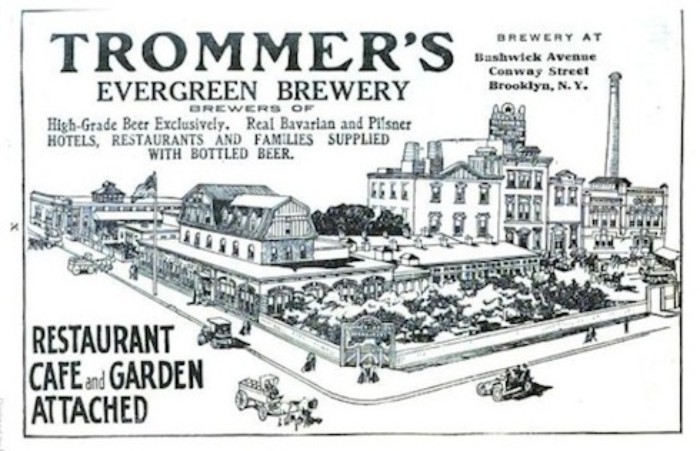
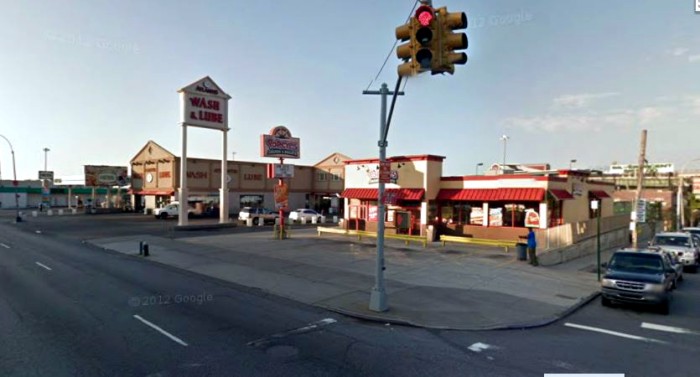
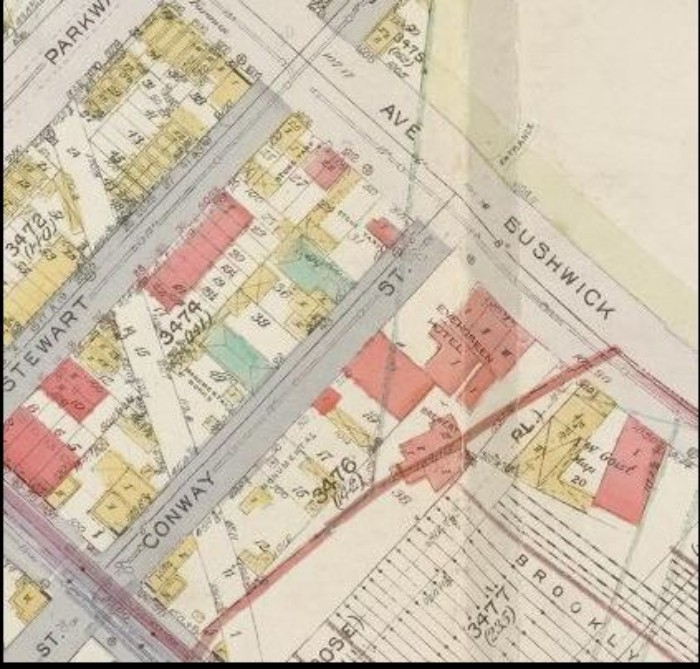
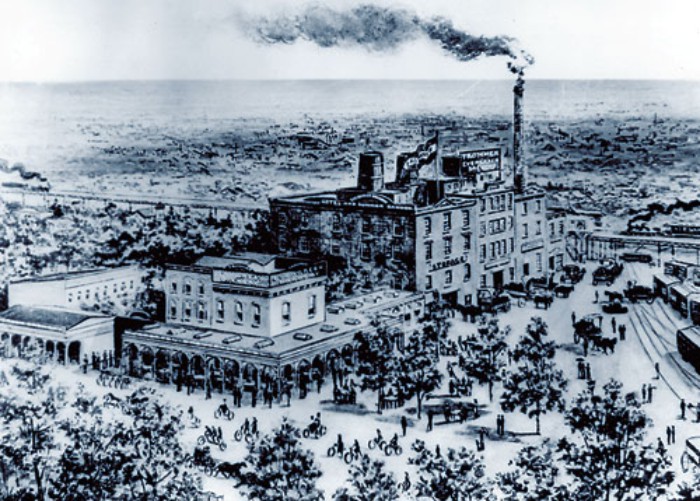
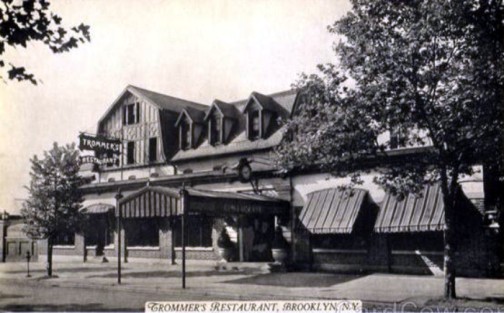
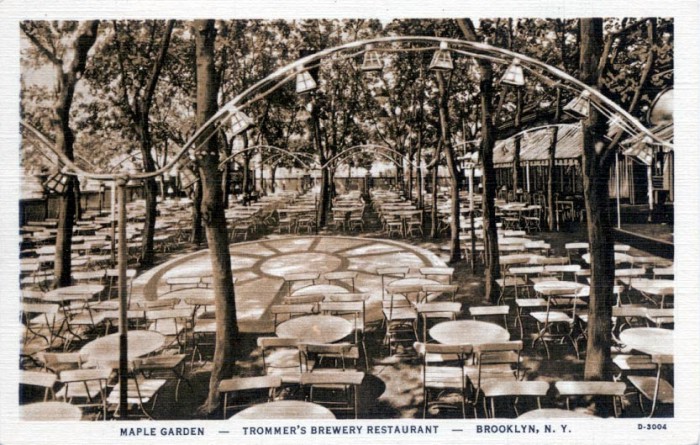
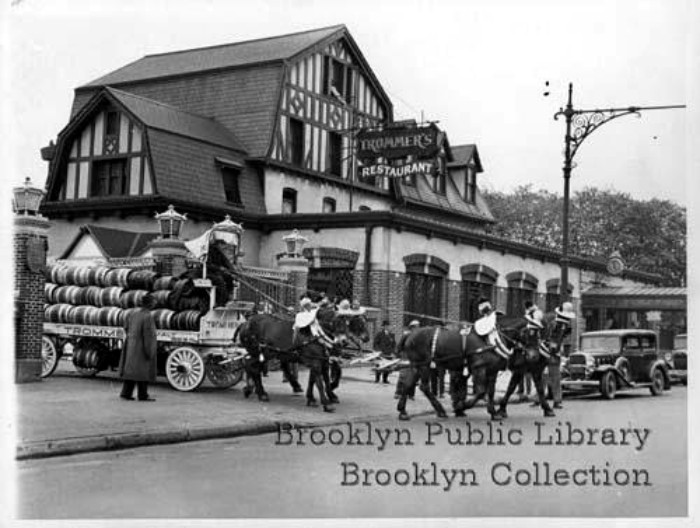
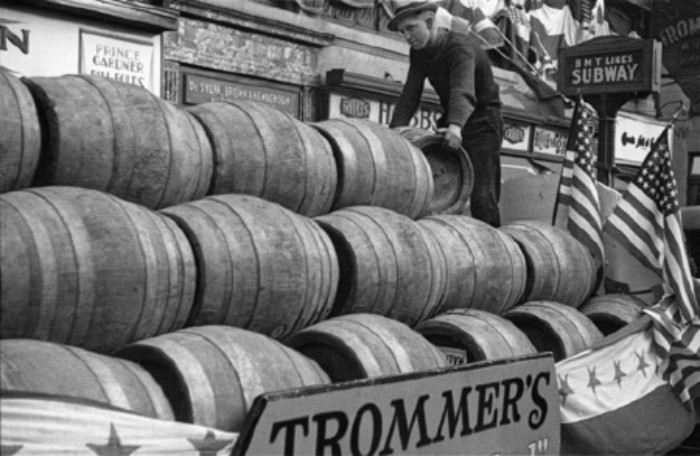




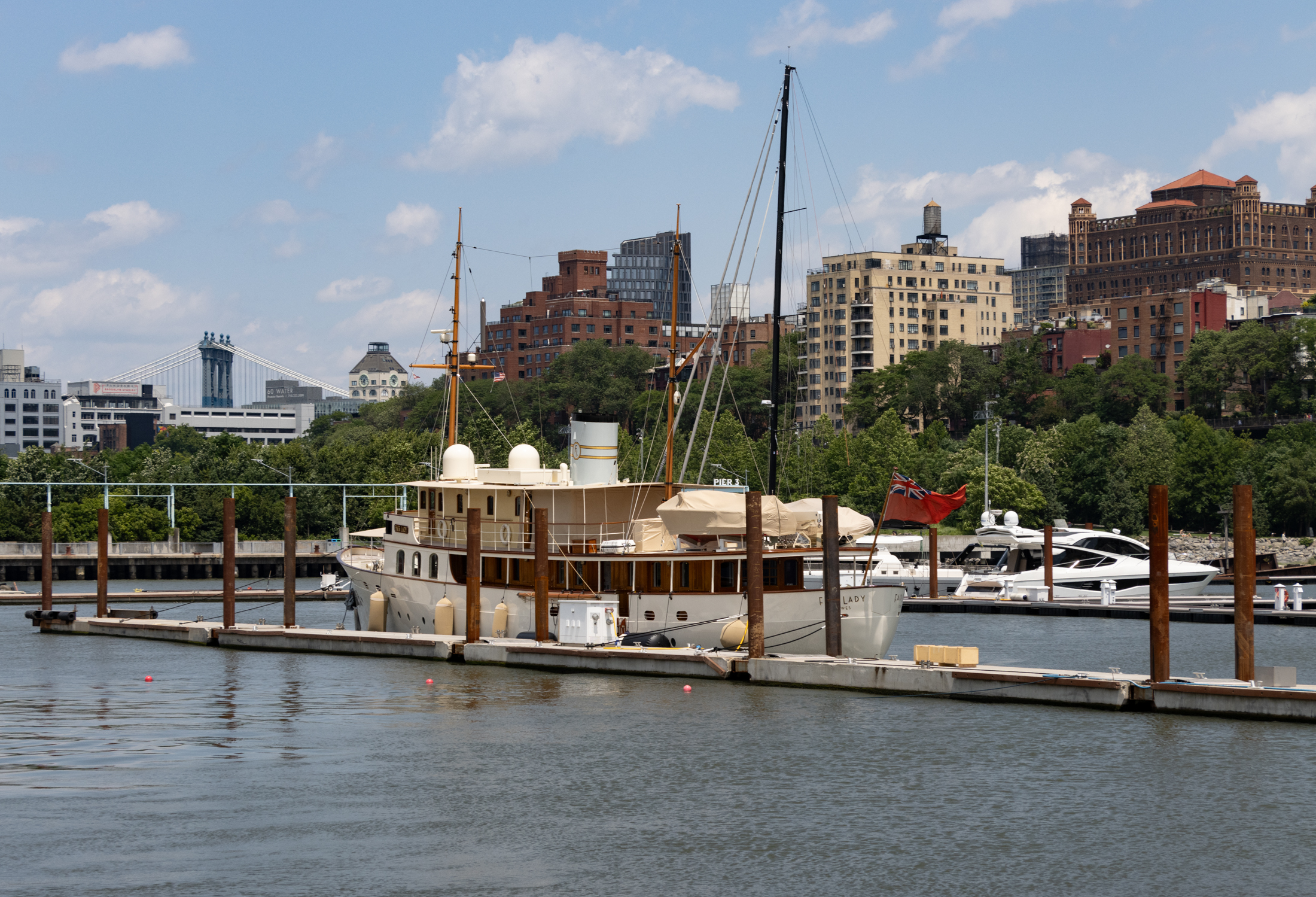
What's Your Take? Leave a Comment